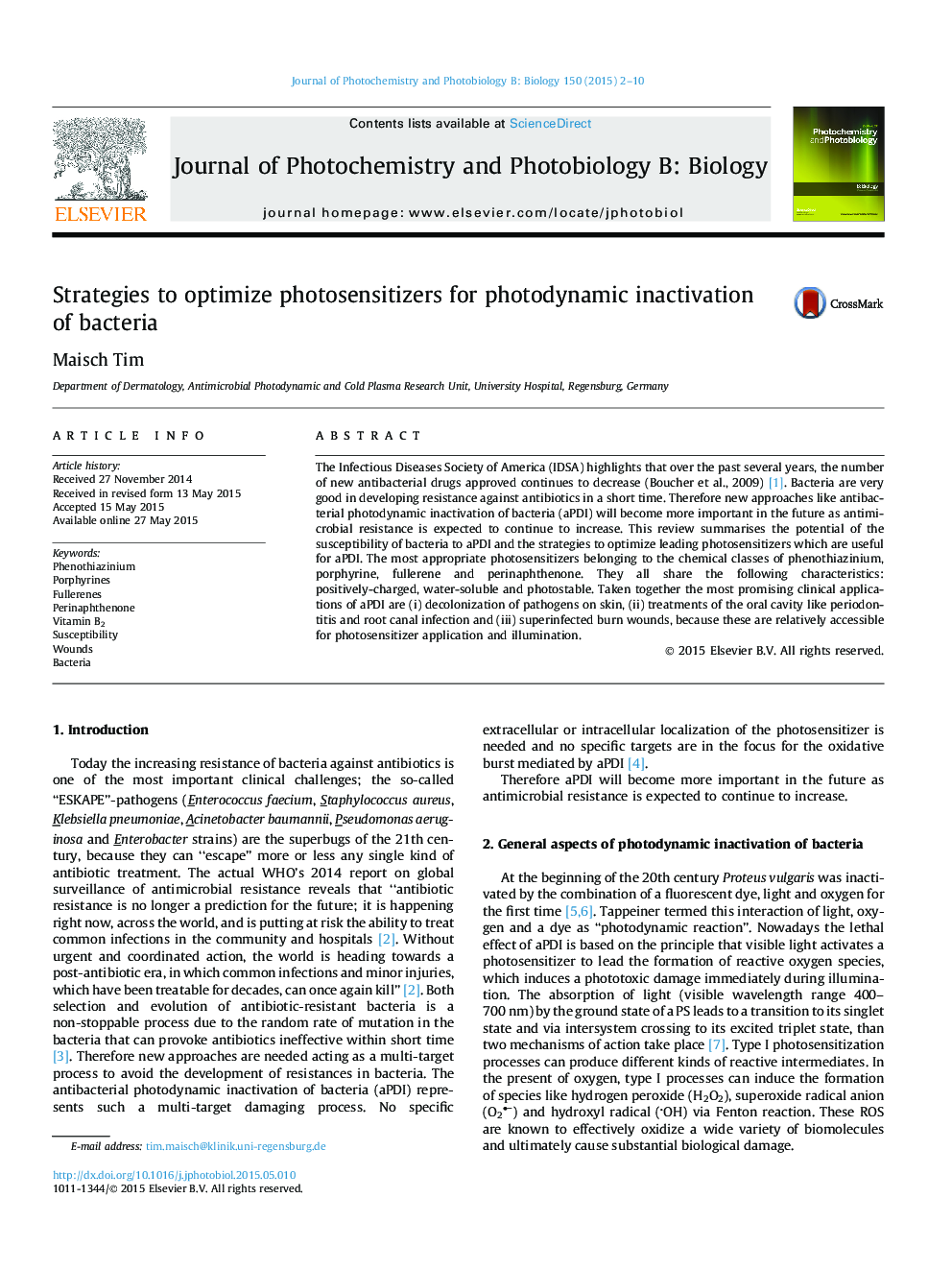| Article ID | Journal | Published Year | Pages | File Type |
|---|---|---|---|---|
| 30021 | Journal of Photochemistry and Photobiology B: Biology | 2015 | 9 Pages |
The Infectious Diseases Society of America (IDSA) highlights that over the past several years, the number of new antibacterial drugs approved continues to decrease (Boucher et al., 2009) [1]. Bacteria are very good in developing resistance against antibiotics in a short time. Therefore new approaches like antibacterial photodynamic inactivation of bacteria (aPDI) will become more important in the future as antimicrobial resistance is expected to continue to increase. This review summarises the potential of the susceptibility of bacteria to aPDI and the strategies to optimize leading photosensitizers which are useful for aPDI. The most appropriate photosensitizers belonging to the chemical classes of phenothiazinium, porphyrine, fullerene and perinaphthenone. They all share the following characteristics: positively-charged, water-soluble and photostable. Taken together the most promising clinical applications of aPDI are (i) decolonization of pathogens on skin, (ii) treatments of the oral cavity like periodontitis and root canal infection and (iii) superinfected burn wounds, because these are relatively accessible for photosensitizer application and illumination.
•Decolonization of bacteria by aPDI.•Both killing of bacteria and stimulation of host immune defense by aPDI.•Photosensitizers for diagnostic imaging with efficient antimicrobial activity.•So far no acquired/adaptive aPDI-resistance observed.
